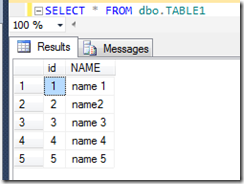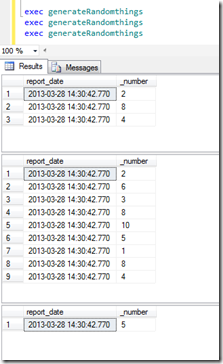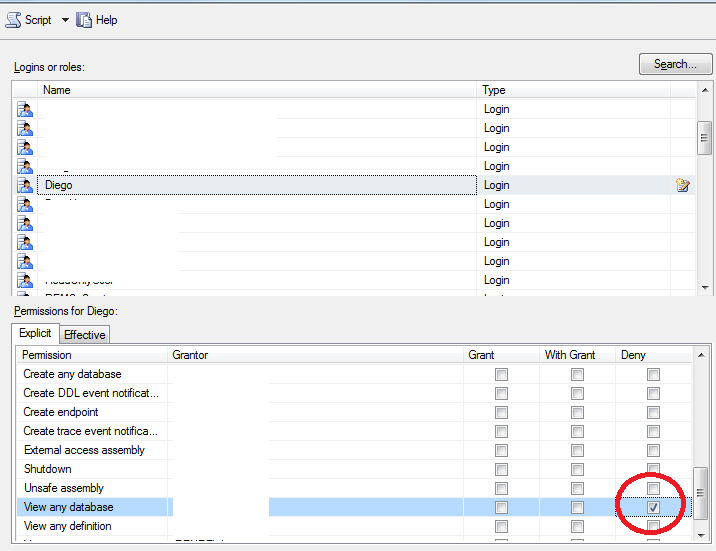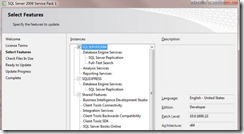http://technet.microsoft.com/en-us/library/ms345287(v=sql.100).aspx
CREATE MINING STRUCTURE [Bike Buyer]
(
[Customer Key] LONG KEY,
[Age]LONG DISCRETIZED(Automatic,10),
[Bike Buyer] LONG DISCRETE,
[Commute Distance] TEXT DISCRETE,
[Education] TEXT DISCRETE,
[Gender] TEXT DISCRETE,
[House Owner Flag] TEXT DISCRETE,
[Marital Status] TEXT DISCRETE,
[Number Cars Owned]LONG DISCRETE,
[Number Children At Home]LONG DISCRETE,
[Occupation] TEXT DISCRETE,
[Region] TEXT DISCRETE,
[Total Children]LONG DISCRETE,
[Yearly Income] DOUBLE CONTINUOUS
)
WITH HOLDOUT (30 PERCENT or 1000 CASES)
ALTER MINING STRUCTURE [Bike Buyer]
ADD MINING MODEL [Decision Tree]
(
[Customer Key],
[Age],
[Bike Buyer] PREDICT,
[Commute Distance],
[Education],
[Gender],
[House Owner Flag],
[Marital Status],
[Number Cars Owned],
[Number Children At Home],
[Occupation],
[Region],
[Total Children],
[Yearly Income]
) USING Microsoft_Decision_Trees
WITH DRILLTHROUGH
ALTER MINING STRUCTURE [Bike Buyer]
ADD MINING MODEL [Clustering]
USING Microsoft_Clustering
INSERT INTO MINING STRUCTURE [Bike Buyer]
(
[Customer Key],
[Age],
[Bike Buyer],
[Commute Distance],
[Education],
[Gender],
[House Owner Flag],
[Marital Status],
[Number Cars Owned],
[Number Children At Home],
[Occupation],
[Region],
[Total Children],
[Yearly Income]
)
OPENQUERY([Adventure Works DW2008],
'SELECT CustomerKey, Age, BikeBuyer,
CommuteDistance,EnglishEducation,
Gender,HouseOwnerFlag,MaritalStatus,
NumberCarsOwned,NumberChildrenAtHome,
EnglishOccupation,Region,TotalChildren,
YearlyIncome
FROM dbo.vTargetMail')
SELECT * FROM [Clustering].CONTENT
SELECT *
FROM [Decision Tree].CASES
SELECT DISTINCT [Bike Buyer]
FROM [Decision Tree]
SELECT
[Bike Buyer] AS Buyer,
PredictHistogram([Bike Buyer]) AS Statistics
FROM
[Decision Tree]
NATURAL PREDICTION JOIN
(SELECT 35 AS [Age],
'5-10 Miles' AS [Commute Distance],
'1' AS [House Owner Flag],
2 AS [Number Cars Owned],
2 AS [Total Children]) AS t
http://technet.microsoft.com/en-us/library/cc879270(v=sql.100).aspx
CREATE MINING MODEL [Forecasting_MIXED]
(
[Reporting Date] DATE KEY TIME,
[Model Region] TEXT KEY,
[Quantity] LONG CONTINUOUS PREDICT,
[Amount] DOUBLE CONTINUOUS PREDICT
)
USING Microsoft_Time_Series (AUTO_DETECT_PERIODICITY = 0.8, FORECAST_METHOD = 'MIXED')
WITH DRILLTHROUGH
ALTER MINING STRUCTURE [Forecasting_MIXED_Structure]
ADD MINING MODEL [Forecasting_ARIMA]
(
[Reporting Date],
[Model Region],
[Quantity] PREDICT,
[Amount] PREDICT
)
USING Microsoft_Time_Series (AUTO_DETECT_PERIODICITY = .08, FORECAST_METHOD = 'ARIMA')
WITH DRILLTHROUGH
ALTER MINING STRUCTURE [Forecasting_MIXED_Structure]
ADD MINING MODEL [Forecasting_ARTXP]
(
[Reporting Date],
[Model Region],
[Quantity] PREDICT,
[Amount] PREDICT
)
USING Microsoft_Time_Series (AUTO_DETECT_PERIODICITY = .08, FORECAST_METHOD = 'ARTXP')
WITH DRILLTHROUGH
INSERT INTO MINING STRUCTURE [Forecasting_MIXED_Structure]
(
[Reporting Date],[Model Region],[Quantity],[Amount]
)
OPENQUERY(
[Adventure Works DW2008],
'SELECT [ReportingDate],[ModelRegion],[Quantity],[Amount] FROM vTimeSeries ORDER BY [ReportingDate]'
)
SELECT
[Forecasting_MIXED].[Model Region],
PredictTimeSeries([Forecasting_MIXED].[Quantity],6) AS PredictQty,
PredictTimeSeries ([Forecasting_MIXED].[Amount],6) AS PredictAmt
FROM
[Forecasting_MIXED]
WHERE [Model Region] = 'M200 Europe' OR
[Model Region] = 'M200 Pacific'
SELECT [Model Region],
PredictTimeSeries([Quantity],6, EXTEND_MODEL_CASES) AS PredictQty
FROM
[Forecasting_MIXED]
NATURAL PREDICTION JOIN
(
SELECT 1 AS [Reporting Date],
'10' AS [Quantity],
'M200 Europe' AS [Model Region]
UNION SELECT
2 AS [Reporting Date],
15 AS [Quantity],
'M200 Europe' AS [Model Region]
) AS t
WHERE [Model Region] = 'M200 Europe' OR
[Model Region] = 'M200 Pacific'
SELECT [Model Region],
PredictTimeSeries([Quantity],3,6, EXTEND_MODEL_CASES) AS PredictQty
FROM
[Forecasting_MIXED]
NATURAL PREDICTION JOIN
(
SELECT 1 AS [Reporting Date],
'10' AS [Quantity],
'M200 Europe' AS [Model Region]
UNION SELECT
2 AS [Reporting Date],
15 AS [Quantity],
'M200 Europe' AS [Model Region]
) AS t
WHERE [Model Region] = 'M200 Europe'

![clip_image001[4] clip_image001[4]](https://dmenin.files.wordpress.com/2013/08/clip_image0014_thumb.png?w=215&h=289)





